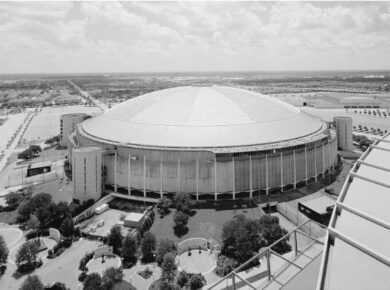Jean Balladur (born 11 May 1924)
Jean Balladur will always be closely associated with his postmodernist “masterpiece” La Grande Motte, on which he worked for more than 15 years. I will refrain from commenting in my posts, it is not my place to judge famous architects, but the least you can say is that the concrete pyramids have caused quite a bit of controversy.
But let’s not forget that Balladur was an enthusiastic student of the Bauhaus style and post-war modernism for 10 years. before he joined the postmodernist movement. Jean Balladur was a pupil of Jean-Paul Sartre, which led him to collaborate with the journal Les Temps modernes until political differences led him to distance himself from the philosopher. In 1945, he turned to architecture and in 1954 obtained his diploma in architecture.

He was initially attracted to the aesthetics of the Bauhaus. In November of 1956, he joined a group of forty or so architects and fifteen engineers who were invited to the United States by L’Aluminium Français to see the latest American accomplishments in office buildings. Between visits to the world’s biggest steel and aluminium manufacturers and a meeting with Mies van der Rohe himself, this trip would leave a lasting impression on its participants. The group was impressed by the sophisticated detail of “this architecture all in transparence”.

Source: paris-promeneurs.com
After his return to France, he designed a first building in steel and enameled glass in 1956-1958, the Caisse Centrale de reassurance. Shortly after he conceived the building of the Curie Institute, as well as a wonderful glass and steel villa in the forest of Chantilly, commissioned by his friend Mr. Besson.

Photo: www.architecturedecollection.fr
About the Author:

Bruno Dursin – Managing Director at Believe in Steel. Bruno has more than 30 years of experience in promoting steel & steel solutions. His clients benefit from his extensive network within the building industry.



